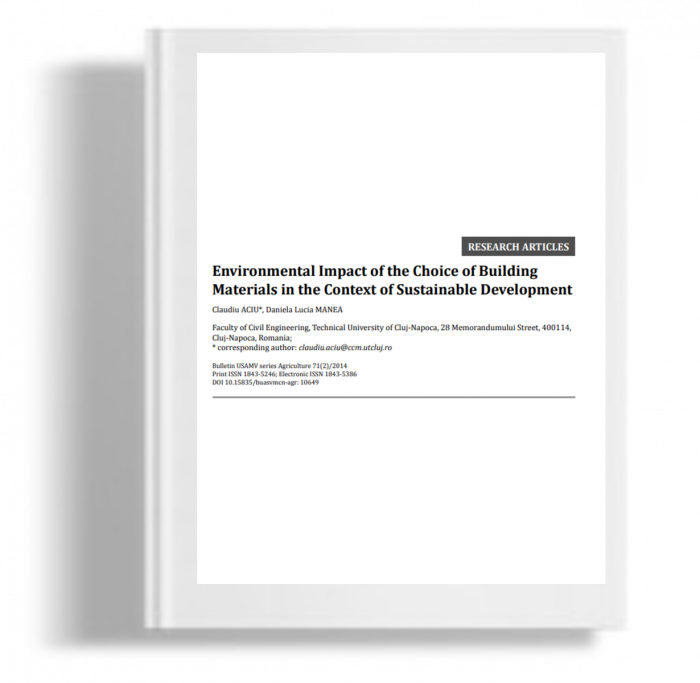Kami menggunakan cookies untuk membuat pengalaman Anda lebih baik. Untuk mematuhi petunjuk e-Pribadi yang baru, kami perlu meminta persetujuan Anda untuk menyetel cookies. Pelajari lebih lanjut .
Environmental impact of the choise building materials in the context of sustainable development
The manufacture of building materials and components, the construction, use and demolition of buildings contribute to the generation of environmental effects such as soil, water and air pollution. The paper deϐines and synthesizes the impact categories that affect the environment, as well as the factors that cause the appearance of impacts, for the choice of optimal ecological building materials. An important problem is ϐinding impact indices that describe the factors affecting the environment, whose value might be quantiϐied. For this, the study was extended to the methods for the evaluation and analysis of the environmental effects of impact factors. The study performed allowed to synthesize the following impact categories taking into consideration the impact factors that occur during the life cycle of materials: natural resources, human health and risk, pollution due to emissions and waste. The impact factors were analyzed from the point of view of the impact level (geographical extension) and the possible magnitude of their value. This article describes a relatively easy method for the choice of the optimal material from a group of materials, taking into calculation the following impact criteria and categories: depletion of natural resources, environmental degradation, toxic substance emissions due to the energy consumed during the production, execution, exploitation and demolition processes, as well as the possibility of reusing waste.
The manufacture of building materials and components, the construction, use and demolition of buildings contribute to the generation of environmental effects such as soil, water and air pollution. The paper deϐines and synthesizes the impact categories that affect the environment, as well as the factors that cause the appearance of impacts, for the choice of optimal ecological building materials. An important problem is ϐinding impact indices that describe the factors affecting the environment, whose value might be quantiϐied. For this, the study was extended to the methods for the evaluation and analysis of the environmental effects of impact factors. The study performed allowed to synthesize the following impact categories taking into consideration the impact factors that occur during the life cycle of materials: natural resources, human health and risk, pollution due to emissions and waste. The impact factors were analyzed from the point of view of the impact level (geographical extension) and the possible magnitude of their value. This article describes a relatively easy method for the choice of the optimal material from a group of materials, taking into calculation the following impact criteria and categories: depletion of natural resources, environmental degradation, toxic substance emissions due to the energy consumed during the production, execution, exploitation and demolition processes, as well as the possibility of reusing waste.

